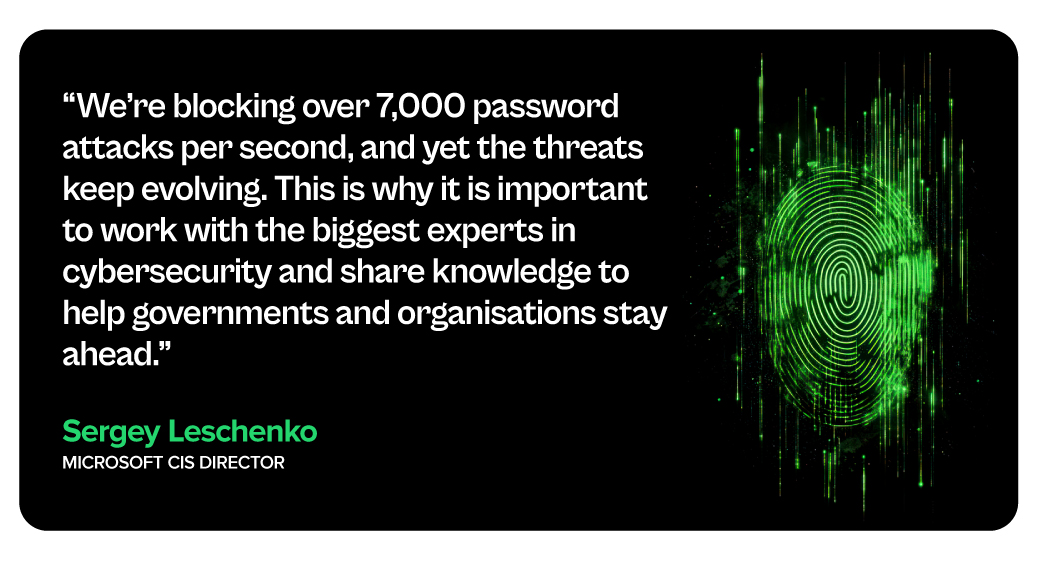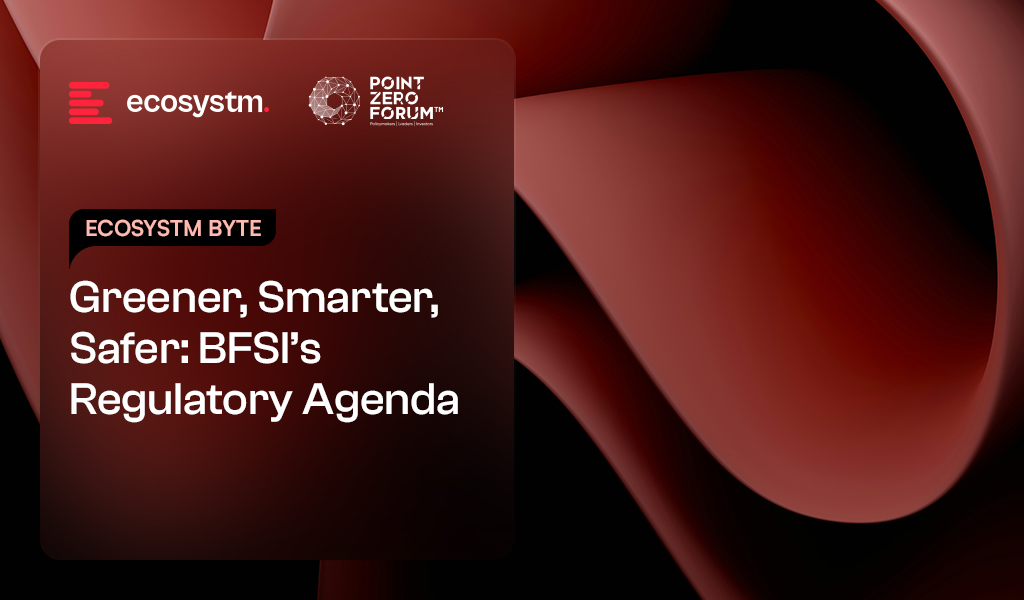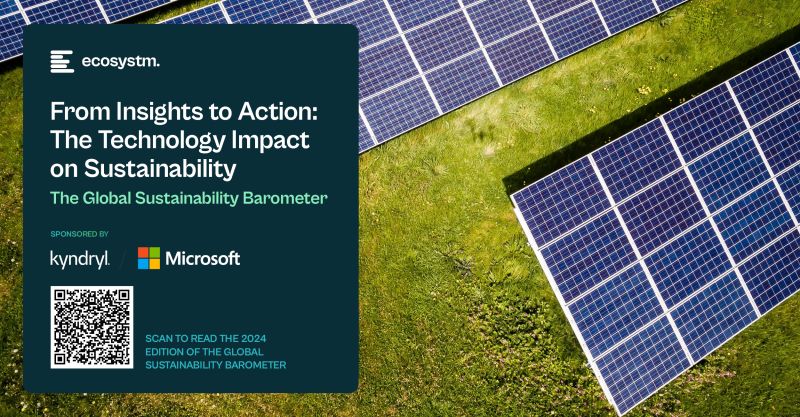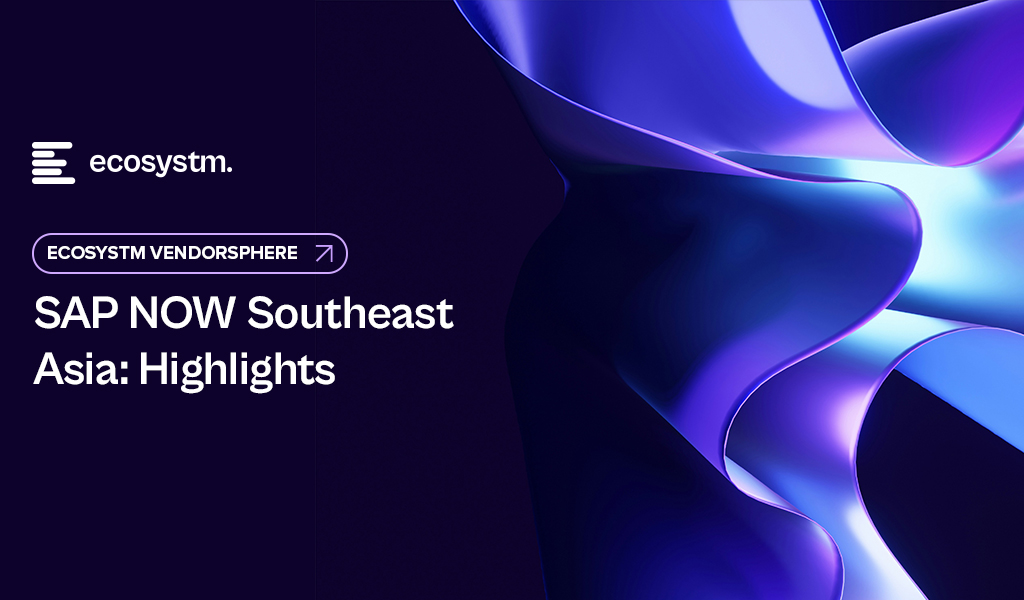“SaaS is dead!” – this paraphrased comment from Satya Nadella during an interview was taken wildly out of context. It reminded me of those 2014-2017 industry reports predicting that voice commerce would be a USD 500B market by 2025, or that self-driving cars would be everywhere by 2027 – just two years from now. As it turns out, people still prefer ordering groceries themselves rather than relying on smart speakers connected to IoT fridges. And those early chatbot pop-ups? More annoying than intelligent. As for autonomous cars, we might still be better drivers – though that’s starting to shift. But I digress.
Back to SaaS. A global industry with over 30,000 companies, mostly in the US, now finds itself under the shadow of the latest buzz: AI agents (still software, not humanoid robots). These agents – programs built on top of LLMs – take actions within set parameters, showing a degree of autonomy.
But to make AI agents enterprise-ready, we’ll need to rethink access control, ethics, authentication, and compliance. So far, they’ve mostly tackled low-value, repetitive tasks. And despite the hype, we’re still some distance from real, meaningful impact.
Predictions Are Fine – But Best Taken with a Pinch of Salt
Salesforce, the world’s largest SaaS company, has played its part in driving this shift — alongside, of course, Microsoft. Microsoft’s aggressive push into AI, with a massive USD 80 billion CapEx on AI data centres and a flurry of product launches like Copilot chat, may just be the beginning. Microsoft even describes Copilot as the “UI for AI.” Despite its size, Salesforce has moved quickly, rolling out Agentforce, its enterprise AI agent suite. While still early days, Salesforce is leveraging its formidable sales and marketing muscle to push the AI agent narrative — while upselling Agentforce to thousands of existing customers.
For context: Salesforce, the largest player, generates around USD 35 billion in annual revenue. Across the industry, there are roughly 300 SaaS unicorns – but even combined, the entire global SaaS sector brings in only about USD 300B a year. Beyond big names like Salesforce, HubSpot, and Atlassian, the market is dominated by a long tail of smaller, vertical SaaS firms that serve niche sub-industries and specialised use cases.
Today, about 70% of enterprise software is delivered through SaaS. But beyond the top 30 vendors, the landscape is highly fragmented — and arguably primed for disruption by AI agents that can automate and streamline more bespoke, industry-specific workflows.
But the thousands of smaller SaaS firms haven’t all moved as quickly as Salesforce has. Most will likely stick to announcements and incremental upgrades rather than radical deployments – especially as enterprises tread carefully while every vendor suddenly becomes “AI-inside”, the new “Intel-inside.”
AI Washing, Hype, and a Flood of Start-Ups
Since ChatGPT’s historic launch in late 2022, the GenAI AI hype curve hasn’t slowed. In SaaS, the early impact has largely been “AI washing”: companies hastily sprinkling “Generative AI” across their websites, collateral, and social feeds while snapping up .ai domains at premium prices.
Meanwhile, over 3,000 AI-first start-ups have emerged, building wrappers around foundational models to deliver bespoke inferences and niche services. Thanks to ongoing hype, some of these are flush with venture capital – even without revenue. At the same time, traditional SaaS firms face tough investor scrutiny over profitability and free cash flow. The contrast couldn’t be starker.
Yet, both the AI upstarts and the older SaaS players face similar go-to-market challenges. Early product-market fit (PMF) is no guarantee of real traction, especially as most enterprise clients are still experimenting, rather than committing, to AI agents. That’s prompting start-ups to build agentic layers atop inference services to bridge the gap.
The Real Race: Embedding AI with Real Impact
It’s too early to call winners. Whether it’s cloud-first SaaS firms evolving into “AI-inside” platforms, or AI agent start-ups challenging the status quo, success will hinge on more than just AI. It will come down to who can combine proprietary data, compelling use cases, and proven workflow impact.
McKinsey sees AI agents serving two broad patterns: the “factory” model for predictable, routine tasks, and the “artisan” model for augmenting more strategic, executive functions. Another compelling narrative does not make the distinction between the earlier crop of cloud-first and the recent crop of AI-first companies. They see this as a natural progression of the SaaS business model, with VSaaS or “vertical Saas with AI-inside” becoming the broader industry.
I’d argue the original cloud-first SaaS firms might actually be better positioned. Their biggest moat? Existing customer relationships. AI start-ups haven’t yet faced the reality of renewing their first multi-year enterprise contracts. That’s where theory meets enterprise buying behaviour – and where this battle will get interesting.
The Playbook for SaaS Winners in the Age of AI Agents
The SaaS companies that will thrive over the next few years will, in my view, focus on these key elements:
- Leverage Early Clients as a Moat. Invest in the success of your first enterprise clients, ensuring they extract real, sustainable value before chasing new logos. Build enough trust, and you could co-create AI agents trained on their proprietary data, enhancing your core product in the process. Snowflake, with its broad enterprise footprint, has a head start here, but start-ups like Collectivei and Beam are targeting similar use cases, while platforms like Letta help companies deploy their own agents.
- Codify the Use Case. Build products that go deep – not broad. Focus on specific use cases or verticals that a horizontal SaaS company is unlikely to prioritise. Eventually, most enterprise users will care less about which foundation model powers your tool and more about the outcomes.
- Operate with a GTM-First Mindset. Many SaaS firms struggle with margins because of high sales and marketing costs, often wavering between sales-led and product-led growth without a clear go-to-market (GTM) plan. AI start-ups, too, are learning that pure product-led growth doesn’t scale in crowded markets and often pivot to sales-led motions too late. Companies like Chargeflow show why a GTM-first approach is key to building real traction and a growth flywheel.
- Rethink Bundling. Bundling has long been a SaaS pricing play – slicing features into tiers. AI-first start-ups are poised to disrupt this. The shift will be towards outcome-based pricing rather than packaging features. Winners will iterate constantly, tuning bundles to different user cohorts and business goals.
- Charge for Success, Not Seats. AI’s biggest impact may be on pricing. Traditional seat-based models will give way to success or outcome-based pricing, with minimal or no set-up fees. Professional services for customisation will still have value, especially where products align deeply with client workflows and outcomes.
- Prioritise Renewal Over Acquisition. Many AI-first start-ups focus on acquiring logos but underestimate that enterprises are still experimenting – switching costs are low, and loyalty is thin. Building for retention, renewal, and upselling will separate winners from the rest. Focus on churn early.
The Next Chapter in Enterprise Automation
Automation has always been a continuum. Remember when cloud vs. on-prem dominated enterprise debates? Or when RPA was expected to replace most workflows as we knew them? The reality was more measured, and we’re seeing a similar pattern with AI today. Enterprises will first focus on making AI co-pilots work safely, reliably, and effectively before they’re ready to hand over the keys to AI agents running workflows on autopilot. This shift won’t happen overnight.
We’re already seeing early winners capable of negotiating this shift, on both sides: established SaaS giants adapting and AI-native start-ups rising. But make no mistake, this will be a long, hard-fought race. Sustained value capture will demand more than just better tech; it will require a fundamental shift in mindset, go-to-market strategies, and sales motions.
Don’t be surprised if the acronym flips along the way – with Software-as-a-Service giving way to Service-as-Software, as AI agents begin to run entire business processes end to end.
Through it all, one principle will remain timeless: an obsession with customer success – whether the agent is human or machine.
Home to over 60% of the global population, the Asia Pacific region is at the forefront of digital transformation – and at a turning point. The Asian Development Bank forecasts a USD 1.7T GDP boost by 2030, but only if regulation keeps pace with innovation. In 2025, that alignment is taking shape: regulators across the region are actively crafting policies and platforms to scale innovation safely and steer it toward public good. Their focus spans global AI rules, oversight of critical tech in BFSI, sustainable finance, green fintech, and frameworks for digital assets.
Here’s a look at some of the regulatory influences on the region’s BFSI organisations.
Click here to download “Greener, Smarter, Safer: BFSI’s Regulatory Agenda” as a PDF.
The Ripple Effect of Global AI Regulation on APAC Finance
The EU’s AI Act – alongside efforts by other countries such as Brazil and the UK – signals a global shift toward responsible AI. With mandates for transparency, accountability, and human oversight, the Act sets a new bar that resonates across APAC, especially in high-stakes areas like credit scoring and fraud detection.
For financial institutions in the region, ensuring auditable AI systems and maintaining high data quality will be key to compliance. But the burden of strict rules, heavy fines, and complex risk assessments may slow innovation – particularly for smaller fintechs. Global firms with a footprint in the EU also face the challenge of navigating divergent regulatory regimes, adding complexity and cost.
APAC financial institutions must strike a careful balance: safeguarding consumers while keeping innovation alive within a tightening regulatory landscape.
Stepping Up Oversight: Regulating Tech’s Role
Effective January 1, 2025, the UK has granted the Financial Conduct Authority (FCA) and Bank of England oversight of critical tech firms serving the banking sector. This underscores growing global recognition of the systemic importance of these providers.
This regulatory expansion has likely implications for major players such as AWS, Google, and Microsoft. The goal: strengthen financial stability by mitigating cyber risks and service disruptions.
As APAC regulators watch closely, a key question emerges: will similar oversight frameworks be introduced to protect the region’s increasingly interconnected financial ecosystem?
With heavy reliance on a few core tech providers, APAC must carefully assess systemic risks and the need for regulatory safeguards in shaping its digital finance future.
Catalysing Sustainable Finance Through Regional Collaboration
APAC policymakers are translating climate ambitions into tangible action, exemplified by the collaborative FAST-P initiative between Australia and Singapore, spearheaded by the Monetary Authority of Singapore (MAS).
Australia’s USD 50 million commitment to fintech-enabled clean energy and infrastructure projects across Southeast Asia demonstrates a powerful public-private partnership driving decarbonisation through blended finance models.
This regional collaboration highlights a proactive approach to leveraging financial innovation for sustainability, setting a potential benchmark for other APAC nations.
Fostering Green Fintech Innovation Across APAC Markets
The proactive stance on sustainable finance extends to initiatives promoting green fintech startups.
Hong Kong’s upcoming Green Fintech Map and Thailand’s expanded ESG Product Platform are prime examples. By spotlighting sustainability-focused digital tools and enhancing data infrastructure and disclosure standards, these regulators aim to build investor confidence in ESG-driven fintech offerings.
This trend underscores a clear regional strategy: APAC regulators are not merely encouraging green innovation but actively cultivating ecosystems that facilitate its growth and scalability across diverse markets.
Charting the Regulatory Course for Digital Asset Growth in APAC
APAC regulators are gaining momentum in building forward-looking frameworks for the digital asset landscape. Japan’s proposal to classify crypto assets as financial products, Hong Kong’s expanded permissions for virtual asset activities, and South Korea’s gradual reintroduction of corporate crypto trading all point to a proactive regulatory shift.
Australia’s new crypto rules, including measures against debanking, and India’s clarified registration requirements for key players further reflect a region moving from cautious observation to decisive action.
Regulators are actively shaping a secure, scalable digital asset ecosystem – striking a balance between innovation, strong compliance, and consumer protection.
Ecosystm Opinion
APAC regulators are sending a clear message: innovation and oversight go hand in hand. As the region embraces a digital-first future, governments are moving beyond rule-setting to design frameworks that actively shape the balance between innovation, markets, institutions, and society.
This isn’t just about following global norms; it’s a bold step toward defining new standards that reflect APAC’s unique ambitions and the realities of digital finance.

A lot has been written and spoken about DeepSeek since the release of their R1 model in January. Soon after, Alibaba, Mistral AI, and Ai2 released their own updated models, and we have seen Manus AI being touted as the next big thing to follow.
DeepSeek’s lower-cost approach to creating its model – using reinforcement learning, the mixture-of-experts architecture, multi-token prediction, group relative policy optimisation, and other innovations – has driven down the cost of LLM development. These methods are likely to be adopted by other models and are already being used today.
While the cost of AI is a challenge, it’s not the biggest for most organisations. In fact, few GenAI initiatives fail solely due to cost.
The reality is that many hurdles still stand in the way of organisations’ GenAI initiatives, which need to be addressed before even considering the business case – and the cost – of the GenAI model.
Real Barriers to GenAI
• Data. The lifeblood of any AI model is the data it’s fed. Clean, well-managed data yields great results, while dirty, incomplete data leads to poor outcomes. Even with RAG, the quality of input data dictates the quality of results. Many organisations I work with are still discovering what data they have – let alone cleaning and classifying it. Only a handful in Australia can confidently say their data is fully managed, governed, and AI-ready. This doesn’t mean GenAI initiatives must wait for perfect data, but it does explain why Agentic AI is set to boom – focusing on single applications and defined datasets.
• Infrastructure. Not every business can or will move data to the public cloud – many still require on-premises infrastructure optimised for AI. Some companies are building their own environments, but this often adds significant complexity. To address this, system manufacturers are offering easy-to-manage, pre-built private cloud AI solutions that reduce the effort of in-house AI infrastructure development. However, adoption will take time, and some solutions will need to be scaled down in cost and capacity to be viable for smaller enterprises in Asia Pacific.
• Process Change. AI algorithms are designed to improve business outcomes – whether by increasing profitability, reducing customer churn, streamlining processes, cutting costs, or enhancing insights. However, once an algorithm is implemented, changes will be required. These can range from minor contact centre adjustments to major warehouse overhauls. Change is challenging – especially when pre-coded ERP or CRM processes need modification, which can take years. Companies like ServiceNow and SS&C Blue Prism are simplifying AI-driven process changes, but these updates still require documentation and training.
• AI Skills. While IT teams are actively upskilling in data, analytics, development, security, and governance, AI opportunities are often identified by business units outside of IT. Organisations must improve their “AI Quotient” – a core understanding of AI’s benefits, opportunities, and best applications. Broad upskilling across leadership and the wider business will accelerate AI adoption and increase the success rate of AI pilots, ensuring the right people guide investments from the start.
• AI Governance. Trust is the key to long-term AI adoption and success. Being able to use AI to do the “right things” for customers, employees, and the organisation will ultimately drive the success of GenAI initiatives. Many AI pilots fail due to user distrust – whether in the quality of the initial data or in AI-driven outcomes they perceive as unethical for certain stakeholders. For example, an AI model that pushes customers toward higher-priced products or services, regardless of their actual needs, may yield short-term financial gains but will ultimately lose to ethical competitors who prioritise customer trust and satisfaction. Some AI providers, like IBM and Microsoft, are prioritising AI ethics by offering tools and platforms that embed ethical principles into AI operations, ensuring long-term success for customers who adopt responsible AI practices.
GenAI and Agentic AI initiatives are far from becoming standard business practice. Given the current economic and political uncertainty, many organisations will limit unbudgeted spending until markets stabilise. However, technology and business leaders should proactively address the key barriers slowing AI adoption within their organisations. As more AI platforms adopt the innovations that helped DeepSeek reduce model development costs, the economic hurdles to GenAI will become easier to overcome.

2025 is already shaping up to be a battleground for cybersecurity. With global cybercrime costs projected to reach USD 10.5T, by year’s end, the stakes have never been higher. Cybercriminals are getting smarter, using AI-driven tactics and large-scale exploits to target critical sectors. From government breaches to hospital data leaks and a surge in phishing scams, recent attacks highlight the growing financial and operational toll of cyber threats.
As cyber threats intensify, the demand for stronger defences, top-tier cybersecurity talent, and global collaboration has never been more urgent.
Here’s a look at the recent cyber developments that are shaping 2025.
Click here to download “Cyber Lessons from the Frontlines” as a PDF.
Major Security Breaches: A Costly Wake-Up Call
Cyberattacks are becoming more targeted, disruptive, and costly – impacting governments and organisations worldwide.
In Singapore, mobile wallet fraud is surging, with phishing tactics causing USD 8.9K in losses – 80% linked to Apple Pay. In the UK, security flaws in government IT systems have exposed sensitive data and infrastructure. South Africa’s government-run weather service (SAWS) was also forced offline, disrupting a critical resource for airlines, farmers, and emergency responders. Across the Atlantic, a data breach at a Georgia hospital compromised 120,000 patient records, while BayMark Health Services, the largest addiction treatment provider in the US, alerted patients to a similar breach.
What steps are governments, tech providers, and enterprises taking to protect themselves, critical infrastructure, and individuals?
Protecting Critical Infrastructure: The Digital Backbone
As global connectivity expands, securing critical infrastructure is paramount to sustaining growth, stability, and public trust.
Undersea cables, which carry much of the world’s internet traffic, are a major focus. While tech giants like Amazon, Meta, and Google are expanding these networks to boost global data speed and reliability, the need for protection is just as urgent – prompting the EU to invest nearly a billion dollars in securing them against emerging threats.
Governments and tech providers alike are stepping up. The European Commission has introduced a cybersecurity blueprint to strengthen crisis coordination, rapid response, and information sharing. Meanwhile, Microsoft is investing USD 700M in Poland’s cloud and AI infrastructure, working with the Polish National Defense to enhance cybersecurity through AI-driven strategies.
Quantifying Cyber Risk: Standardised Threat Assessment
As cyber threats grow more sophisticated, so must our ability to detect, measure, and respond to them.
A major shift in cybersecurity is underway – one that prioritises standardised threat assessment and coordinated defense.
The UK is leading the charge with a new cyber monitoring centre that will introduce a “Richter Scale” for cyberattacks, ranking threats much like earthquake magnitudes. Emerging countries are also joining in; Vietnam is strengthening its cyber defences with a new intelligence-sharing platform designed to improve coordination between the government and private sector.
By quantifying cyber risks and enhancing intelligence-sharing, these efforts are shaping global cybersecurity norms, improving response times, and building a more resilient digital ecosystem.
Beyond Defence: Proactive Measures to Combat AI-Driven Cybercrime
Cyber threats evolve faster than defences can keep up – a single click on a malicious email can lead to a breach in just 72 minutes.
With AI making cyberattacks more sophisticated, governments are taking an active role in cyber law enforcement.
Indonesia set up a cyber patrol to monitor and regulate harmful online content while also working to create a safer digital space for children. Thailand, Cambodia, and Laos are cooperating to curb cross-border scams through intelligence sharing and joint enforcement efforts.
Building Trust Online: Digital Identity Solutions
Governments are moving beyond enforcement to strengthen security with digital identity frameworks.
The EU is leading this shift with large-scale pilots for digital identity wallets, designed to offer citizens a secure, seamless way to verify credentials for services, transactions, and age-restricted content. By 2026, each EU member state will issue its own wallet, built on unified technical standards to ensure cross-border interoperability and stronger cybersecurity.
Digital identity wallets mark a major shift in data security, giving citizens greater control over their information while strengthening online trust. By securing identity verification, governments are reducing fraud and identity theft, creating a safer digital landscape.
Closing the Gap: Global Cyber Education Push
Cybersecurity education is no longer just for IT teams – it’s essential at every level, from executives to employees, to build long-term resilience.
Again, governments and tech giants alike are stepping up to bridge the skills gap and enhance cyber awareness.
Singapore is leading by example with a cyber-resilience training program for board directors, ensuring corporate leaders understand cyber risk management. AWS is investing USD 6.35M to support cybersecurity education in the UK, and Microsoft is expanding its global training efforts. The company has partnered with Kazakhstan to strengthen public sector cybersecurity and has committed to training one million South Africans in AI and cybersecurity by 2026.

The Path Forward: A Collective Responsibility
The cybersecurity landscape underscores a crucial truth: resilience can’t be built in isolation. Governments, businesses, and individuals must move past reactive measures and adopt a collective, intelligence-driven approach. As threats grow more sophisticated, so must our commitment to collaboration, vigilance, and proactive defence.
In an increasingly interconnected world, securing the digital landscape is not just necessary – it’s a shared responsibility.

Undersea cables form the invisible backbone of the modern internet, carrying vast amounts of data across continents and connecting billions of people. These vital arteries of global communication are, however, surprisingly vulnerable.
Hybrid Warfare at Sea
Recent incidents have highlighted the vulnerability of undersea infrastructure, particularly in the Baltic Sea. In the latest case, a fibre optic cable between Latvia and Sweden was reportedly severed by the dragging anchor of the cargo ship Vezhen, originating from Russia’s Ust-Luga port. Swedish authorities boarded and seized the vessel.
In December, the Eagle S Panamax oil tanker, sailing from St. Petersburg, allegedly damaged a power cable and three fibre optic cables between Estonia and Finland, as well as another connection between Finland and Germany. Finnish authorities seized the ship for investigation. A similar incident occurred in November when the Yi Peng 3, also from Ust-Luga, was linked to cable ruptures connecting Sweden to Lithuania and Finland to Germany. Although shadowed by the Royal Danish Navy, the vessel was ultimately allowed to continue its voyage.
The suspected sabotage of 11 undersea cables in 15 months has alarmed NATO countries, prompting increased surveillance around Europe. Patrols will focus on protecting critical assets like fibre optic cables, power lines, gas pipelines, and environmental sensors. Dubbed Baltic Sentry, the mission will deploy frigates, patrol aircraft, and unmanned naval drones, supported by NATO’s Maritime Centre for the Security of Critical Undersea Infrastructure. An AI system will monitor unusual shipping activity, such as loitering near cables or erratic course changes, aiming to cut response times to 30-60 minutes. Meanwhile, Operation Nordic Warden will analyse satellite imagery, patrol data, and Automatic Identification System (AIS) signals to assess risks in 22 key areas.
The primary concern is damage to infrastructure in the shallow waters of the Baltic Sea, but suspicious activity elsewhere has caught the attention of tech giants. Ireland, a critical hub for Europe’s cloud data centres, hosts undersea cables owned by companies like Google, Microsoft, and Amazon, linking it to the US and UK. As a non-NATO country, Ireland faces the challenge of monitoring over 3,000km of coastline. Recently, both the Irish Defence Forces and Royal Navy shadowed a Russian spy ship in the Irish Sea and English Channel. While cable damage is often immediately evident, the risk of communication taps is more alarming and harder to detect.
How Resilient Are Undersea Cable Networks?
There are about 400 undersea cables spanning over 1.3 million kms globally. According to the International Cable Protection Committee, around 200 incidents of cable damage occur annually, mostly caused by dragged anchors or trawling. Only about 10% result from natural causes like weather or wildlife. Near shorelines, cables are heavily protected and often buried under several metres of sand in shallow waters. However, in deeper seas, they are harder to monitor and safeguard.
Highly developed regions, such as the Baltic Sea, North Sea, and Irish Sea, rely on multiple redundant cables to maintain connections between countries. While severing a single link may reduce capacity and cause inconvenience, major disruptions are rare, even for remote European islands served by multiple cables.
Fibre optic cable repairs typically take days to weeks, faster than the lengthy timelines for fixing power cables or gas pipelines. Repair costs range from USD 1-3 million depending on the damage. Faults are located using test pulses, and specialised ships lift the damaged sections to the surface for splicing. However, with only 22 repair-designated cable ships worldwide, simultaneous outages could significantly delay restoration.
In regions with less cooperative neighbours, obtaining permissions can further slow repairs. For instance, cables crossing the South China Sea face increasing challenges in deployment and maintenance, complicating connections between ASEAN nations. Routing cables along longer coastal paths raises costs and impacts latency, adding further strain to the network.
Responding to Escalating Incidents
Plausible deniability and the opaque nature of maritime operations make attributing these events challenging. Nonetheless, NATO countries view them as part of Russia’s broader hybrid warfare strategy, which avoids direct confrontation while instilling fear and uncertainty by showcasing an adversary’s reach. Attacks on undersea cables undermine public trust in a government’s ability to protect critical infrastructure.
European governments initially downplayed the impact of these attacks, likely to minimise psychological effects and avoid escalation. While this cautious approach, coupled with rapid repairs, proved effective in the short term, it may have emboldened adversaries, leading to further incidents. In response, Sweden and Finland are now more willing to seize vessels in their territorial waters to deter both intentional and negligent actions.
Implications for Enterprise Networks
While enterprises cannot prevent damage to undersea infrastructure, they can mitigate risks and build resilient networks:
- Satellite Connectivity. Satellite internet services like Starlink and Eutelsat may not be ideal for bandwidth-intensive applications but can support critical services requiring international connections. An SD-WAN enables automatic failover to a redundant circuit if a land-based or undersea cable is disrupted.
- Dynamic Path Selection. Modern WAN architectures with dynamic path selection can reroute traffic to alternate cloud regions when primary paths are down. Locally available services can continue operating on domestic networks unaffected by international outages.
- Edge Computing. Adopting an edge-to-cloud strategy allows the running of select workloads closer to the edge or in local data centres. This reduces reliance on international links, improves resilience, and lowers latency.
- Disaster Recovery Planning. Enterprises should incorporate extended network outages into their disaster recovery plans, assessing the potential impact on operations and distinguishing between land-based, undersea, and other types of connections.

As increasing climate chaos creates a disruptive impact on businesses, climate crisis, resource scarcity and environmental destruction are no longer just news stories — they are daily realities affecting all of us. Despite numerous sustainability initiatives, progress is not happening fast enough to meet the demands of a growing population and a rapidly changing planet.
The second edition of The Global Sustainability Barometer study, commissioned by Kyndryl and Microsoft, examines the roles that strategy, data and AI play in achieving sustainability goals and highlights the gaps between organizational intent and action.
Conducted by Ecosystm in August and September of 2024, this study reflects the perspectives of 1,355 global sustainability leaders spanning 20 countries and nine industries. Respondents were evenly split between technology leaders and sustainability leaders from various business lines.
Download Whitepaper – 2024 Global Sustainability Barometer Study

(Clicking on this link will take you to the Kyndryl website where you can download the whitepaper)

The increasing alignment between IT and business functions, while crucial for organisational success, complicates the management of enterprise systems. Tech leaders must balance rapidly evolving business needs with maintaining system stability and efficiency. This dynamic adds pressure to deliver agility while ensuring long-term ERP health, making management increasingly complex.

As tech providers such as SAP enhance their capabilities and products, they will impact business processes, technology skills, and the tech landscape.
At SAP NOW Southeast Asia in Singapore, SAP presented their future roadmap, with a focus on empowering their customers to transform with agility. Ecosystm Advisors Sash Mukherjee and Tim Sheedy provide insights on SAP’s recent announcements and messaging.

Click here to download SAP NOW Southeast Asia: Highlights
What was your key takeaway from the event?
TIM SHEEDY. SAP is making a strong comeback in Asia Pacific, ramping up their RISE with SAP program after years of incremental progress. The focus is on transitioning customers from complex, highly customised legacy systems to cloud ERP, aligning with the region’s appetite for simplifying core processes, reducing customisations, and leveraging cloud benefits. Many on-prem SAP users have fallen behind on updates due to over-customisation, turning even minor upgrades into major projects – and SAP’s offerings aim to solve for these challenges.
SASH MUKHERJEE. A standout feature of the session was the compelling customer case studies. Unlike many industry events where customer stories can be generic, the stories shared were examples of SAP’s impact. From Mitr Phol’s use of SAP RISE to enhance farm-to-table transparency to CP Group’s ambitious sustainability goals aligned with the SBTi, and Standard Chartered Bank’s focus on empowering data analytics teams, these testimonials offered concrete illustrations of SAP’s value proposition.
How is SAP integrating AI into their offerings?
TIM SHEEDY. SAP, like other tech platforms, is ramping up their AI capabilities – but with a twist.
They are not only highlighting GenAI but also emphasising their predictive AI features. SAP’s approach focuses on embedded AI, integrating it directly into systems and processes to offer low-risk, user-friendly solutions.
Joule, their AI copilot, is enterprise-ready, providing seamless integration with SAP backend systems and meeting strict compliance standards like GDPR and SOC-II. By also integrating with Microsoft 365, Joule extends its reach to daily tools like Outlook, Teams, Word, and Excel.
While SAP AI may lack the flash of other platforms, it is designed for SAP users – managers and board members – who prioritise consistency, reliability, and auditability alongside business value.
What is the value proposition of SAP’s Clean Core?
SASH MUKHERJEE. SAP’s Clean Core marks a strategic shift in ERP management.
Traditionally, businesses heavily customised SAP to meet specific needs, resulting in complex and costly IT landscapes. Clean Core advocates for a standardised system with minimal customisations, offering benefits like increased agility, lower costs, and reduced risk during upgrades. However, necessary customisations can still be achieved using SAP’s BTP.
The move to the Clean Core is often driven by CEO mandates, as legacy SAP solutions have become too complex to fully leverage data. For example, an Australian mining company reduced customisations from 27,000 to 200, and Standard Chartered Bank used Clean Core data to launch a carbon program within four months.
However, the transition can be challenging and will require enhanced developer productivity, expansion of tooling, and clear migration paths.
How is SAP shifting their partner strategy?
As SAP customers face significant transformations, tech partners – cloud hyperscalers, systems integrators, consulting firms and managed services providers – will play a crucial role in executing these changes before SAP ECC loses support in 2027.
TIM SHEEDY. SAP has always relied on partners for implementations, but with fewer large-scale upgrade projects in recent years, many partner teams have shrunk. Recognising this, SAP is working to upskill partners on RISE with SAP. This effort aims to ensure they can effectively manage and optimise the modern Cloud ERP platform, utilise assets, templates, accelerators, and tools for rapid migration, and foster continuous innovation post-migration. The availability of these skills in the market will be essential for SAP customers to ensure successful transitions to the Cloud ERP platform.
SASH MUKHERJEE. SAP’s partner strategy emphasises business transformation over technology migration. This shift requires partners to focus on delivering measurable business outcomes rather than solely selling technology. Given the prevalence of partner-led sales in Southeast Asia, there is a need to empower partners with tools and resources to effectively communicate the value proposition to business decision-makers. While RISE certifications will be beneficial for larger partners, a significant portion of the market comprises SMEs that rely on smaller, local partners – and they will need support mechanisms too.
What strategies should SAP prioritise to maintain market leadership?
TIM SHEEDY. Any major platform change gives customers an opportunity to explore alternatives.
Established players like Oracle, Microsoft, and Salesforce are aggressively pursuing the ERP market. Meanwhile, industry-specific solutions, third-party support providers, and even emerging technologies like those offered by ServiceNow are challenging the traditional ERP landscape.
However, SAP has made significant strides in easing the transition from legacy platforms and is expected to continue innovating around RISE with SAP. By offering incentives and simplifying migration, SAP aims to retain their customer base. While SAP’s focus on renewal and migration could pose challenges for growth, the company’s commitment to execution suggests they will retain most of their customers. GROW with SAP is likely to be a key driver of new business, particularly in mid-sized organisations, especially if SAP can tailor offerings for the cost-sensitive markets in the region.

Exiting the North-South Highway 101 onto Mountain View, California, reveals how mundane innovation can appear in person. This Silicon Valley town, home to some of the most prominent tech giants, reveals little more than a few sprawling corporate campuses of glass and steel. As the industry evolves, its architecture naturally grows less inspiring. The most imposing structures, our modern-day coliseums, are massive energy-rich data centres, recursively training LLMs among other technologies. Yet, just as the unassuming exterior of the Googleplex conceals a maze of shiny new software, GenAI harbours immense untapped potential. And people are slowly realising that.
It has been over a year that GenAI burst onto the scene, hastening AI implementations and making AI benefits more identifiable. Today, we see successful use cases and collaborations all the time.
Finding Where Expectations Meet Reality
While the data centres of Mountain View thrum with the promise of a new era, it is crucial to have a quick reality check.
Just as the promise around dot-com startups reached a fever pitch before crashing, so too might the excitement surrounding AI be entering a period of adjustment. Every organisation appears to be looking to materialise the hype.
All eyes (including those of 15 million tourists) will be on Paris as they host the 2024 Olympics Games. The International Olympic Committee (IOC) recently introduced an AI-powered monitoring system to protect athletes from online abuse. This system demonstrates AI’s practical application, monitoring social media in real time, flagging abusive content, and ensuring athlete’s mental well-being. Online abuse is a critical issue in the 21st century. The IOC chose the right time, cause, and setting. All that is left is implementation. That’s where reality is met.
While the Googleplex doesn’t emanate the same futuristic aura as whatever is brewing within its walls, Google’s AI prowess is set to take centre stage as they partner with NBCUniversal as the official search AI partner of Team USA. By harnessing the power of their GenAI chatbot Gemini, NBCUniversal will create engaging and informative content that seamlessly integrates with their broadcasts. This will enhance viewership, making the Games more accessible and enjoyable for fans across various platforms and demographics. The move is part of NBCUniversal’s effort to modernise its coverage and attract a wider audience, including those who don’t watch live television and younger viewers who prefer online content.
From Silicon Valley to Main Street
While tech giants invest heavily in GenAI-driven product strategies, retailers and distributors must adapt to this new sales landscape.
Perhaps the promise of GenAI lies in the simple storefronts where it meets the everyday consumer. Just a short drive down the road from the Googleplex, one of many 37,000-square-foot Best Buys is preparing for a launch that could redefine how AI is sold.
In the most digitally vogue style possible, the chain retailer is rolling out Microsoft’s flagship AI-enabled PCs by training over 30,000 employees to sell and repair them and equipping over 1,000 store employees with AI skillsets. Best Buy are positioning themselves to revitalise sales, which have been declining for the past ten quarters. The company anticipates that the augmentation of AI skills across a workforce will drive future growth.

The Next Generation of User-Software Interaction
We are slowly evolving from seeking solutions to seamless integration, marking a new era of User-Centric AI.
The dynamic between humans and software has mostly been transactional: a question for an answer, or a command for execution. GenAI however, is poised to reshape this. Apple, renowned for their intuitive, user-centric ecosystem, is forging a deeper and more personalised relationship between humans and their digital tools.
Apple recently announced a collaboration with OpenAI at its WWDC, integrating ChatGPT into Siri (their digital assistant) in its new iOS 18 and macOS Sequoia rollout. According to Tim Cook, CEO, they aim to “combine generative AI with a user’s personal context to deliver truly helpful intelligence”.
Apple aims to prioritise user personalisation and control. Operating directly on the user’s device, it ensures their data remains secure while assimilating AI into their daily lives. For example, Siri now leverages “on-screen awareness” to understand both voice commands and the context of the user’s screen, enhancing its ability to assist with any task. This marks a new era of personalised GenAI, where technology understands and caters to individual needs.
We are beginning to embrace a future where LLMs assume customer-facing roles. The reality is, however, that we still live in a world where complex issues are escalated to humans.
The digital enterprise landscape is evolving. Examples such as the Salesforce Einstein Service Agent, its first fully autonomous AI agent, aim to revolutionise chatbot experiences. Built on the Einstein 1 Platform, it uses LLMs to understand context and generate conversational responses grounded in trusted business data. It offers 24/7 service, can be deployed quickly with pre-built templates, and handles simple tasks autonomously.
The technology does show promise, but it is important to acknowledge that GenAI is not yet fully equipped to handle the nuanced and complex scenarios that full customer-facing roles need. As technology progresses in the background, companies are beginning to adopt a hybrid approach, combining AI capabilities with human expertise.
AI for All: Democratising Innovation
The transformations happening inside the Googleplex, and its neighbouring giants, is undeniable. The collaborative efforts of Google, SAP, Microsoft, Apple, and Salesforce, amongst many other companies leverage GenAI in unique ways and paint a picture of a rapidly evolving tech ecosystem. It’s a landscape where AI is no longer confined to research labs or data centres, but is permeating our everyday lives, from Olympic broadcasts to customer service interactions, and even our personal devices.
The accessibility of AI is increasing, thanks to efforts like Best Buy’s employee training and Apple’s on-device AI models. Microsoft’s Copilot and Power Apps empower individuals without technical expertise to harness AI’s capabilities. Tools like Canva and Uizard empower anybody with UI/UX skills. Platforms like Coursera offer certifications in AI. It’s never been easier to self-teach and apply such important skills. While the technology continues to mature, it’s clear that the future of AI isn’t just about what the machines can do for us—it’s about what we can do with them. The on-ramp to technological discovery is no longer North-South Highway 101 or the Googleplex that lays within, but rather a network of tools and resources that’s rapidly expanding, inviting everyone to participate in the next wave of technological transformation.

Quantum computing is emerging as a groundbreaking force with the potential to reshape industries and enhance national security with unparalleled speed and precision. Governments and technology providers worldwide are heavily investing in this transformative technology, which promises significant advancements in areas such as cryptography, drug development, AI, and finance. Countries like Australia, Singapore, Taiwan, Qatar, and the UK are investing heavily in quantum research, backed by tech giants like Nvidia, IBM, and Google.
Ecosystm research finds that nearly 30% of enterprises are expecting to use quantum computing in the next 5 years.
Beyond Bits: Exploring the Potential of Quantum Computers
We need quantum computers because they have the potential to solve certain problems that are impossible (or impractical) for classical computers. Last year, Google led a study revealing that its quantum processor can complete a task in 6.18 seconds that would take a traditional supercomputer 47 years.
Here are a few reasons why quantum computing is exciting:
Unleashing the power of qubits. While classical computers use bits that can be either 0 or 1, quantum computers use qubits, which can exist in both states simultaneously (a state called superposition). This allows them to explore multiple possibilities simultaneously, making them significantly faster for specific tasks.
Tackling complex problems. Problems like simulating molecules or breaking complex encryption codes involve massive calculations. Quantum computers, with their unique properties, can manage these complexities more efficiently.
Revolutionising specific fields. Quantum computing has the potential to transform areas such as materials science, drug discovery, AI, and financial modelling. By simulating complex systems and processes, they could lead to breakthroughs in various sectors.
Quantum computers will not replace traditional computers entirely, but rather function as powerful tools for specific tasks beyond the reach of classical machines. Let’s look at cybersecurity as an example.
Twenty years ago, hacking was a basic task. Imagine a time before social media, when a simple computer and basic technical know-how were enough to breach a network. The stakes were low, the landscape uncomplicated. But technology, like threats, has evolved. Today’s hackers use sophisticated techniques, employing strategies like “harvest now, decrypt later” – stealing data today to decrypt later using more powerful machines. This is where quantum computing enters the scene, posing a significant threat to current encryption methods. In response, tech giants like Google, Apple, and Zoom are implementing quantum-resistant encryption into their software, safeguarding user data from potential future decryption attempts. Governments and telecommunication providers worldwide are boosting quantum encryption to tackle the potential security crisis.
The thrill of quantum computing lies in its infancy. Unforeseen applications, beyond our current imagination, could be unlocked as the technology matures.
Current Quantum Projects Focused on Security
First Scalable Network Secures Maritime Trade. The Netherlands is improving the resiliency of transport infrastructure in their own major international maritime hub, using quantum. The Port of Rotterdam Authority joined a collection of quantum technology firms to create a comprehensive cybersecurity ecosystem – the first of its kind globally. The port uses quantum technology to safeguard sensitive information, improving safety for the seagoing vessels carrying 470 million tonnes of cargo annually.
UK Integrates Quantum Navigation for Secure Air Travel. The UK is improving its digital transport infrastructure by integrating the first ever un-jammable aviation navigation system, powered by quantum software. This initiative was prompted by an incident where a government plane carrying the UK defence secretary had its GPS signal jammed close to Russian territory. This technology ensures safe and reliable navigation for aircraft, particularly in hostile environments. The UK government is investing USD 56 million into their quantum sector, aiming to become a quantum-enabled economy by 2033.
Governments Putting Faith in Quantum
Taiwan’s First Domestic 5-Qubit Computer. Taiwan is aiming to be a leader in quantum computing by building its first domestic machine by 2027. This initiative is part of a larger USD 259 million, five-year plan for quantum technology, and has a multi-pronged approach including building the actual quantum computer hardware; developing solutions to secure data in a world with quantum computers (quantum cryptography); creating a strong supply chain for quantum computing components within Taiwan; and collaborating with international partners to develop testing platforms and expertise.
Singapore Explores Real-World Applications. The Singaporean government has pledged USD 518 million to their National Quantum Strategy (NQS). This investment will provide the necessary resources to explore real-time applications of quantum technology in healthcare and technology. Simultaneously, they launched the National Quantum Processor Initiative (NQPI) to develop quantum sensors that will aid in research. Singapore aims to lead the world in quantum tech for investment portfolios, cryptography, and drug discovery.
Australia Aiming for World’s First Utility-Scale Machine. Backed by a USD 620 million investment from the Australian and Queensland governments, PsiQuantum aims to build a fault-tolerant computer that can solve previously challenging problems in fields like renewable energy, healthcare, and transportation. PsiQuantum’s innovative “fusion-based architecture” tackles scaling challenges by using millions of light-based qubits, paving the way for a new era of computational power and potentially sparking the next industrial revolution. This project positions Australia as a global leader in harnessing the immense potential of quantum computing.
Tech Companies Making the Quantum Leap
IBM Enhances Quantum Performance. IBM’s latest quantum computing platform, Qiskit 1.0, has worked on features that enhance performance, stability, and reliability. The updated open-source SDK aims to facilitate accessible quantum programming and accelerate processing times. Qiskit 1.0 uses optimised circuits to create and manage the interplay between classical and quantum computing. IBM is even collaborating with Japan’s AIST to develop a 10,000-qubit quantum computer by 2029, which is 75 times more powerful than current systems.
Microsoft and Quantinuum Achieve Reliable Logical Qubits. This significant milestone is said to mark a new era of dependable quantum technology, dramatically reducing errors and enhancing the precision of quantum computations. They have demonstrated an 800x improvement in error rates, paving the way for hybrid supercomputing systems that combine AI, high-performance computing (HPCs), and quantum capabilities to tackle scientific problems, with new capabilities becoming available to Azure Quantum Elements customers in the coming months.
Quantum Cloud Services for Enterprise. Major tech players QMware, Nvidia, and Oracle are teaming up to create hybrid quantum computing service for businesses. Combining classical and quantum computing, the project aims to crunch complex problems in AI, machine learning, and optimisation – all in the cloud.
Building Towards a Quantum Future
In the short term, using HPCs with quantum algorithms can already provide noticeable speed improvements over traditional methods. Hybrid approaches, where HPCs and quantum computers work together, could lead to significant gains in speed and efficiency, potentially ranging from 10x to 100x improvement.
Three strategies: quantum-inspired, hybrid, and full-scale quantum computing each offer distinct advantages.
While quantum-inspired computing leverages quantum algorithms to run on classical systems, hybrid computing combines classical and quantum processors, optimising the strengths of both to take complex problems more efficiently. Intuitively, full-scale quantum computing represents the ultimate goal, where large, fault-tolerant quantum computers solve problems beyond the reach of current classical systems.
Looking further ahead, the development of large-scale quantum computers could revolutionise industries by solving problems far beyond the reach of classical computers, with potential speedups of 500x to 1000x.
As quantum technology progresses, different industries and applications will benefit from tailored approaches that best suit their unique needs.







































